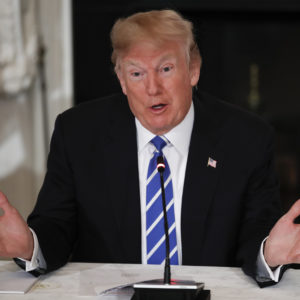On the campaign trail, President Donald Trump reiterated his pledge to “Make American Great Again,” by reinvesting in infrastructure projects around the country. The news was greeted favorably by not only voters, but also municipal governments and the transportation industry. A concentrated presidential push could provide the leadership and dollars to not only build and expand roads, but also repair the water and sewer infrastructure beneath many cities and towns. To reach its lofty $1.5 trillion in infrastructure investment money over the next decade, the plan proposes to leverage state and local funding, by providing grants to promote states and cities to spend more. According to researchers at the University of Pennsylvania’s Wharton Budget Model, Trump’s plan is unlikely to either stimulate the economy in a noticeable way or to spur infrastructure investments in excess of $1 trillion.
“Based on previous experience reviewed herein, most of the grant programs contained in the infrastructure plan fail to provide strong incentives for states to invest additional money in public infrastructure,” the report states bluntly. Although Trump’s infrastructure plan proposes spending $200 billion in grants, the researchers believed that the range of total infrastructure investment could be as little as $20 billion or as much as $230 billion–still far short of the administration’s proposals.
Under Trump’s plan, the federal government would spend $100 billion in block grants designed to encourage states to invest in revenue producing infrastructure projects. An additional $50 billion would go to states in the form of block grants for rural infrastructure projects. The remaining $50 billion would go to developing projects thought to be too risky for private investors, expanding credit availability for infrastructure projects, and a fund to help federal agencies purchase property.
The hope of the block grant structure is to inspire states to devote their resources to infrastructure projects in the hopes of getting access to more federal moneys. Historically speaking, programs structured in this fashion have rarely succeeded in increasing spending, the researchers found, particularly when the matching funds are capped. For each dollar of federal money that passes to states, state spending increases, generally between $0.50 and $0.90.
“The incentive grants in the FY 2019 infrastructure plan do not provide strong incentives for state and local governments to invest additional money in infrastructure,” the researchers write. “These grants are mostly matching grants with caps, which will not change the cost of additional infrastructure once the grant is exhausted.”
Using historical data for the expansion of state spending after federal grants, the researchers devised Low, Medium, and High estimates for how infrastructure investment would change after the infrastructure plan. They found that on the Low side, spending would increase by only $20 billion, with the Medium being an increase of $125 billion, and the High estimate still only reaching $230 billion in state spending.
Digging more deeply into the numbers, they found that development was further slowed when government borrowing increased to fund the infrastructure grants. Another study by the Penn Wharton Budget Model found that Trump’s infrastructure plan could increase the federal debt anywhere from point 0.4% to 0.9% by 2027, which in turn would raise the price of capital.
“Will [the infrastructure plan] be deficit financed or funded by some sort of new tax?” asks Kimberly Burham, managing director of legislation and special projects at the Penn Wharton Budget Model. “That will have a big impact on the economy as well and economic growth and wages and everything else.”
The financing is a major issue for both deficit hawks and rural communities. If the administration is successful in transitioning many projects to public-private partnership status, rural areas fear that companies will gravitate towards areas with higher population density and incomes. This could result in higher fees for rural users and is unlikely to generate increased spending.
Meanwhile, the plan has also faced criticism from deficit hawks, who say it promotes new construction over necessary repairs.
“Although the Trump plan would allow states to spend their share of new infrastructure funds on maintenance, it leaves the decision in the hands of local politicians. They will almost always go for the glitz rather than the routine,” writes Randall O’Toole, a senior fellow in transportation policy at the Cato Institute.
“In general, our state highways, which are funded mainly out of gas taxes, tolls, and other user fees, are in good shape, while local roads, which are funded mainly out of property taxes and sales taxes, are not,” he continued.
He and others argue that the structure of block grants encourages local officials to spend money on building new structures, rather than repairing pre-existing ones. Transportation is particularly prone to this sort of spending, which prioritizes new transit lines over continued maintenance. American highways are often described as crumbling, number of bridges considered “structurally deficient” fell by more than 50 percent between 1990 and 2014.
One of the key differences is the structure of funding. Transportation and infrastructure investment funds gathered through “user fees” like the gas tax or road tolls are generally more directly tied to maintenance and also to how often the resources are used. Block grants, like those proposed in the Trump plan, are less tied to user demands.

